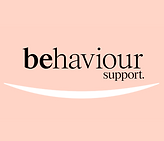Visual and co-regulation tools for overwhelmed children
- Lani Matthews

- Jun 12
- 4 min read
Explore non-verbal communication strategies and co-regulation tools to support children with disabilities, anxiety, sensory processing challenges, and behavioural needs.

Supporting children who find verbal interactions overwhelming can be a significant challenge for parents, caregivers, and educators. Conversations meant to guide or encourage can sometimes trigger distress, shutdowns, or unexpected outbursts. To truly support these children, we need to understand how they experience communication and learn to meet them in ways that feel safe and manageable.
In this blog, we explore why verbal interaction can feel like pressure, how to use non-verbal supports and co-regulation tools, the value of visual cues and safe spaces, and how to gently rebuild trust and communication.
Why Verbal Interaction Can Feel Like a Demand
For many children, especially those with autism, PDA profiles, trauma histories, or sensory sensitivities, verbal communication can feel intrusive. Even calm, supportive speech can trigger anxiety if it is perceived as a demand.
Take Sam, for example. He often becomes frustrated during conversations. To him, the rhythm and tone of speech carry an expectation. He feels the need to respond, process, or comply immediately. Instead of feeling supported, he feels stuck and under pressure.
When we understand that some children experience language in this way, we can begin to shift how we communicate. Our focus becomes creating safety and offering support that respects their unique processing needs.
When and How to Use Non-Verbal Supports and Co-Regulation Tools
When verbal interaction is overwhelming, non-verbal strategies can provide a bridge to connection. These tools reduce the load on the child and create space for calm communication.
Why Non-Verbal Supports Help
Non-verbal supports allow children to:
Feel more in control
Process information in their own time
Engage without the pressure of having to speak
Manage transitions and emotional states more easily
Examples of Non-Verbal Tools
Here are a few strategies that can be used at home, school, or during therapy:
Visual Schedules
Pictures showing daily routines or steps in a task help children understand what comes next. This supports predictability and reduces confusion.
Gestures and Hand Signals
Simple gestures such as pointing or using a thumbs-up can offer support without using words.
Choice Boards
Provide a small set of visual options such as “Cuddle,” “Blanket,” or “Outside.” This helps children make choices without needing to speak.
Emotion Charts
Allow the child to point to a picture that shows how they feel rather than asking them to explain with words.
Safe Space Visuals
Display clear pictures showing what is available in a calm-down space. Examples might include “Sit with pillow,” “Listen to music,” or “Wrap in blanket.”
Creative Expression
Encourage drawing, building, or physical movement as a way to express feelings. This gives children a safe outlet for emotions when words are too hard.
Co-regulation tools: Calming Together
Co-regulation is the process of helping a child regulate their emotions by offering calm, steady presence. Rather than expecting a child to self-soothe, we stay close and emotionally attuned.
Mirrored Breathing
Sit beside the child and breathe slowly and evenly. There is no need to give instructions. Simply model the pace.
Rhythmic Movement
Walking together, gently rocking, or using a swing can help settle the nervous system.
Quiet Presence
If the child is open to it, sitting nearby or gently placing a hand on their shoulder can provide reassurance.
Sensory Comfort Items
Weighted blankets, soft toys, or familiar textures can offer soothing when words are too much.
Visual Cues and Safe Spaces
Visual supports are powerful tools that help children process their feelings and make sense of their environment. A feelings chart or color-coded emotions guide can provide a child with a way to communicate without feeling pressured. Research shows that children who use visual aids are often better able to manage their emotions. One study found that visual emotion tools improved emotional expression by up to 40 percent in anxious children.
Safe spaces are equally important. These are areas where children can retreat when feeling overwhelmed. They might include; soft furnishings, dim lighting, sensory toys, or familiar objects. A safe space gives children permission to step away and regroup on their own terms.
Rebuilding Trust and Communication
Trust grows through consistency, choice, and empathy. Rather than using commands, offer clear and respectful choices. For example, instead of saying “You need to do your homework now,” try “Would you like to start your homework or take a short break first?”
Active Listening
Let children share when they are ready. Show them their feelings matter, even if they are not fully verbal.
Predictable Routines
Establish clear, consistent patterns in daily life. This helps reduce anxiety and promotes a sense of safety.
Encourage Non-Verbal Expression
Support them to use drawing, sensory tools, or play to work through emotions.
Nurturing Positive Interaction
Children who struggle with verbal interaction are not trying to be difficult. Often, they are doing their best in situations that feel overwhelming. By using visual cues, non-verbal supports, and co-regulation strategies, we give them more than just alternatives to talking. We give them connection, calm, and the chance to feel seen and safe.
With time, empathy, and consistent care, trust and communication will grow. Even without many words, a meaningful connection is possible, and it starts with understanding.


Comments